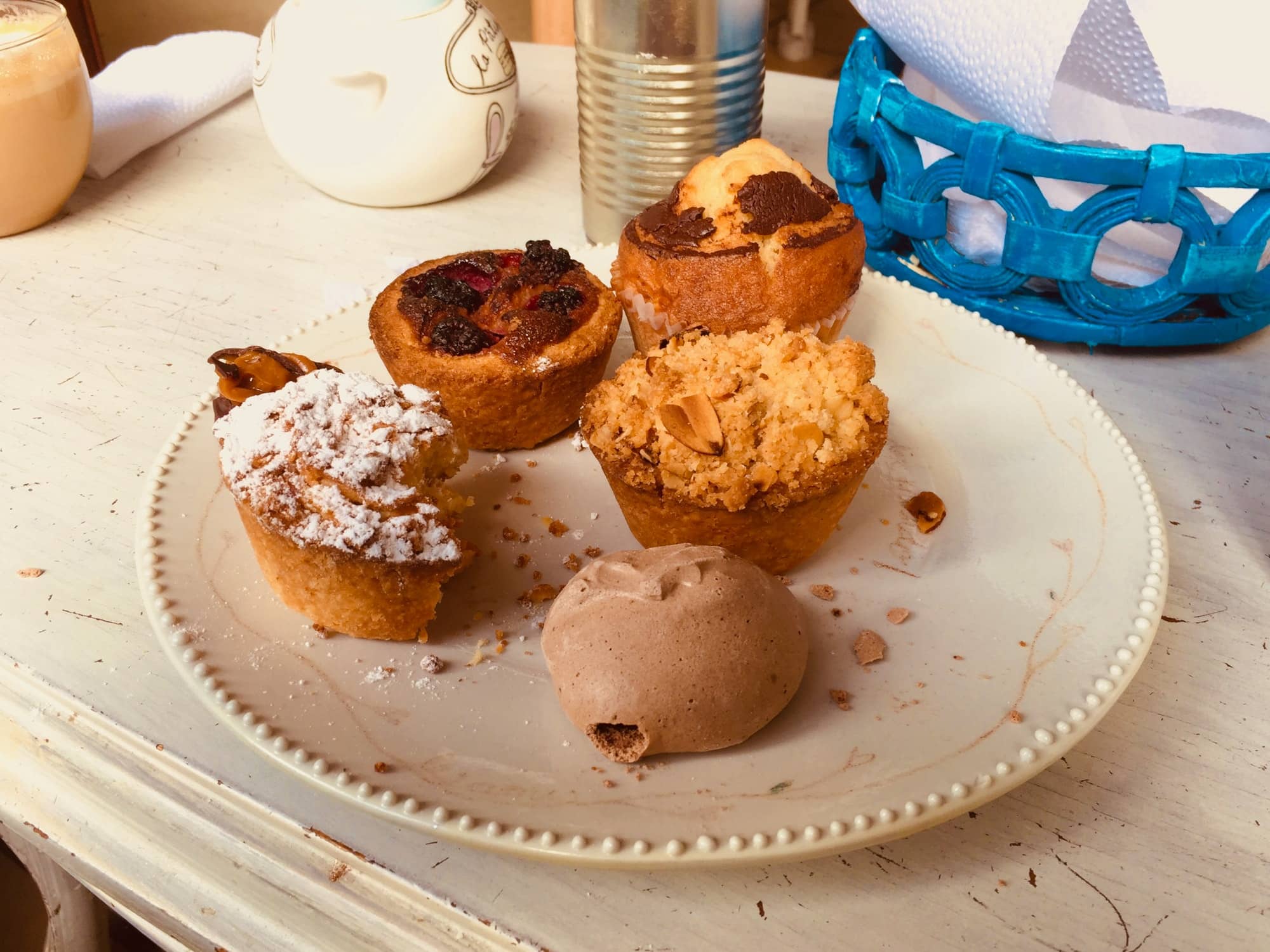As the culinary landscape continues to evolve, one timeless element remains central to many delectable desserts: the pastry cream. This versatile ingredient forms the luscious core of many mouth-watering treats, including the classic éclair. It’s a delicate balance between science and art, a delicate dance of taste and texture. So how do you master the art of perfect pastry cream for éclairs? This article will guide you through the intricate process, providing you with the knowledge and skills necessary to create a pastry cream that is smooth, delectable, and perfectly suited for your éclairs.
Understanding the Basics
Before you can master the art of pastry cream, it’s important to understand what it is and why it’s so essential. At its core, pastry cream, or crème pâtissière, is a thick, creamy custard usually made from a combination of milk, sugar, egg yolks, and a thickening agent like flour or cornstarch. It’s the heart of any good éclair, providing that rich, creamy texture that contrasts so beautifully with the crisp choux pastry.
Lire également : What’s the Key to a Silky-Smooth Italian Carbonara with Guanciale?
To make the perfect pastry cream, you first need to master the balance. Each ingredient plays a crucial role and altering their proportions can drastically affect the end result. Too much sugar, for instance, can make the cream overly sweet, while too much flour or cornstarch can give it a starchy, unpleasant taste.
The Process of Making Pastry Cream
The process of making pastry cream is a delicate art, requiring patience, precision, and a good understanding of cooking techniques. Here’s a step-by-step guide to creating your own.
Dans le meme genre : Can You Create a Luxurious Chocolate Fondant with a Molten Center?
-
Heat the Milk: Start by heating your milk in a saucepan. You’re looking for it to be warm but not boiling.
-
Whisk the Egg Yolks and Sugar: While your milk is heating, whisk together your egg yolks and sugar until they become light and fluffy. This mixture is often referred to as a ‘ribbon’ because of the way it falls off the whisk in thick, smooth ribbons when it’s ready.
-
Add the Thickening Agent: Next, sift in your flour or cornstarch and mix well. It’s crucial to sift to avoid any lumps in your pastry cream.
-
Combine: Once your milk is warm, slowly pour it into your egg yolk mixture, whisking constantly. This is called ‘tempering’ and it’s done to gradually heat the eggs to avoid curdling.
-
Cook: Return the mixture to the pot and cook over medium heat, stirring continuously until it thickens.
-
Strain and Cool: After it has thickened, strain your pastry cream through a fine-mesh sieve to remove any possible lumps. Place it to cool with a piece of plastic wrap directly on the surface to avoid a skin forming.
Remember, practice makes perfect. It might take a few tries to get the consistency and flavor just right, but don’t feel disheartened. Each attempt brings you one step closer to mastering the art of perfect pastry cream.
Experimenting with Flavors
One of the joys of making your own pastry cream is the freedom to experiment with flavors. While the classic crème pâtissière is flavored with vanilla, you could try infusing the milk with a variety of other ingredients to create your own unique spin.
For instance, consider infusing the milk with citrus zest for a tart twist, or add spices like cinnamon or nutmeg for a warming touch. You could also add melted chocolate to the finished pastry cream for a rich, indulgent flavor. The possibilities are truly endless.
Troubleshooting Tips
As with any cooking endeavor, there are a few common problems that can occur when making pastry cream. Here are a few tips to help you overcome them.
-
Lumps: If your pastry cream has lumps, it’s likely because the egg yolks and milk were not properly combined, or the mixture was cooked at too high a heat. Always temper your eggs by adding the warm milk slowly and stirring constantly. If lumps do form, strain the mixture through a fine-mesh sieve.
-
Too Thin or Too Thick: The consistency of your pastry cream can be affected by the ratio of milk to eggs and the amount of thickening agent used. If your cream is too thin, try adding a little more flour or cornstarch. If it’s too thick, a bit more milk can help.
-
Lack of Flavor: The flavor of your pastry cream is largely determined by the quality of your ingredients. Use fresh eggs and high-quality milk for the best results. If your cream still lacks flavor, try adding more vanilla or other flavorings.
With these tips in mind, you’re ready to master the art of perfect pastry cream for éclairs. Happy baking!
Adapting Your Skills to Other Recipes
Once you’ve mastered the art of making pastry cream, you can apply these skills to a plethora of other deserts. The same crème pâtissière that fills your éclairs can be used in a fruit tart, layered between sheets of puff pastry for a mille-feuille, or even piped into doughnuts for a decadent treat.
By understanding the science behind the cream, troubleshooting potential issues, and experimenting with flavors, you’ll be equipped to adapt and enhance a multitude of recipes. So, don’t limit yourself to éclairs. Use your newfound mastery of pastry cream to explore the wide world of desserts.
Innovations in Pastry Cream
In the culinary world, innovation is key, and pastry cream is no exception to this rule. Chefs and bakers globally are constantly pushing the boundaries to create new variations of the traditional crème pâtissière that we all know and love. These innovations often result in delectable new flavor profiles and textures that can elevate your éclairs to the next level.
In recent years, for instance, there’s been a trend towards using alternative types of milk in pastry cream. Almond milk, coconut milk, or oat milk can all be used in place of regular milk, each providing their unique flavor nuances to the cream. Additionally, using plant-based milk can make your pastry cream suitable for those following a vegan diet.
In addition to playing around with the type of milk, you can also experiment with different sweeteners. Honey, agave nectar, or coconut sugar can all be used in place of granulated sugar, adding depth and a unique sweetness profile to your pastry cream.
Chefs are also starting to incorporate savory elements into their pastry creams to create intriguing dessert combinations. Imagine biting into an éclair filled with a rosemary-infused pastry cream, or one that has a hint of basil or thyme. The result is a dessert that defies expectations and provides a refreshing twist on a classic treat.
Conclusion: The Art of Pastry Cream
Mastering the art of pastry cream for éclairs is a journey filled with patience, precision, and creativity. It begins by understanding the basic components and the role each plays in achieving that creamy, silky consistency. From there, it’s all about practice, learning from your mistakes, and developing a keen sense of what works and what doesn’t.
Innovation and experimentation are the spices that keep this journey exciting. Whether it’s playing with different types of milk or sweeteners or incorporating unexpected savory elements, there’s always something new to try in the quest for the perfect pastry cream.
Once you’ve mastered this art, the world is your oyster. The skills you’ve developed can be applied to countless other desserts, opening up a world of culinary opportunities. So don’t be afraid to take that first step.
Remember, in the end, whether you’re a seasoned chef or a home baker, the goal is the same: to create something delicious that brings joy to those who taste it. So go ahead, embark on this journey, and master the art of perfect pastry cream for éclairs. Happy baking!







